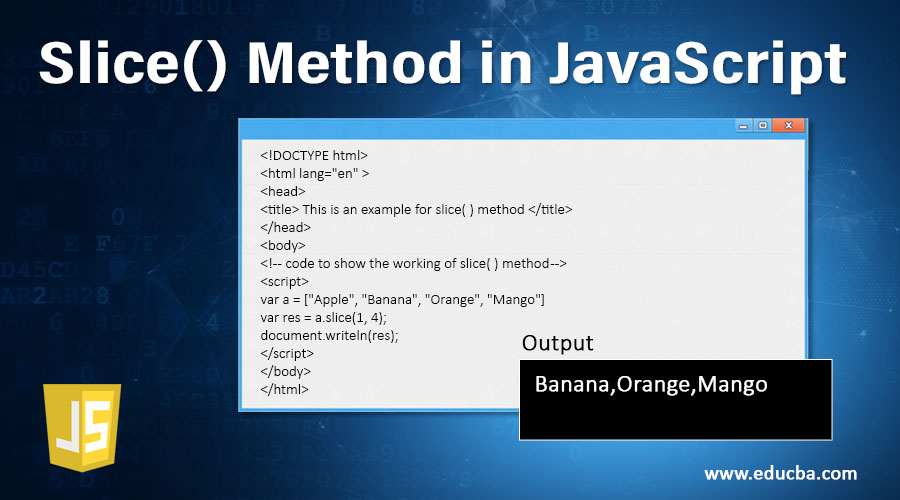
Object.prototype.Using slice and reverse Using spread and reverse Using reduce and spread Using. Object.prototype._lookupGetter_() Deprecated Modifies Original Array How to Reverse Array Without Mutating Original Array.Object.prototype._defineSetter_() Deprecated.Object.prototype._defineGetter_() Deprecated.This example slices out a part of an array starting from array element 1 ('Orange'): Example const fruits 'Banana', 'Orange', 'Lemon', 'Apple', 'Mango' const citrus fruits.slice(1) Try it Yourself Note The slice () method creates a new array. I'm using `alert()` instead of `console. JavaScript Array slice () The slice () method slices out a piece of an array into a new array. slice(-2) extracts the last two elements in the sequence." Thus, your array.slice(-1) is returning a new array populated with the last element of your original, array. Using the new keyword You can also create an array using JavaScripts new keyword. The splice () method is used to add or remove elements of an existing array and the return value will be the removed items from the array.

For example, const array1 'eat', 'sleep' 2. Using an array literal The easiest way to create an array is by using an array literal. The documentation says that " negative index can be used, indicating an offset from the end of the sequence. You can create an array using two ways: 1. In your code, you are executing array.slice(-1). beginning at 1 and up to (not including) 3.Ĭonsole.log(array) // When you call array.slice(), that's returning a slice of your array (as another array). That gives you the first (and only) item from the sliced array, which is then passed to the alert(.). Moving left-to-right, we now have an array of a single item followed by an array index. So, array.slice(-1) gives you an array containing the last element from the original array. slice(-2) extracts the last two elements in the sequence.Ī new array containing the extracted elements. Both function calls and member access are level 19, with left-to-right associativity, which means we evaluate the function call first, then the array index next.įor this, let's turn to the documentation on array.slice, which says:Ī negative index can be used, indicating an offset from the end of the sequence. Which is evaluated first? To answer this, we turn to Operator Precedence.

It has one argument: array.slice(-1), which we'll examine next.Īrray.slice(-1) is another function call. Before it can execute (and print something to the screen), its arguments must be evaluated first. array () now returns pyarrow.Array and not pyarrow. The slice() method selects from a given start, up to a (not inclusive) given end. This is your original statement: alert(array.slice(-1)) Īlert(.) is a function call. The slice() method returns selected elements in an array, as a new array. By understanding each small piece, you will understand the whole. Break the expression down into its parts.


 0 kommentar(er)
0 kommentar(er)
